Japan Surveillance Storage Market Size
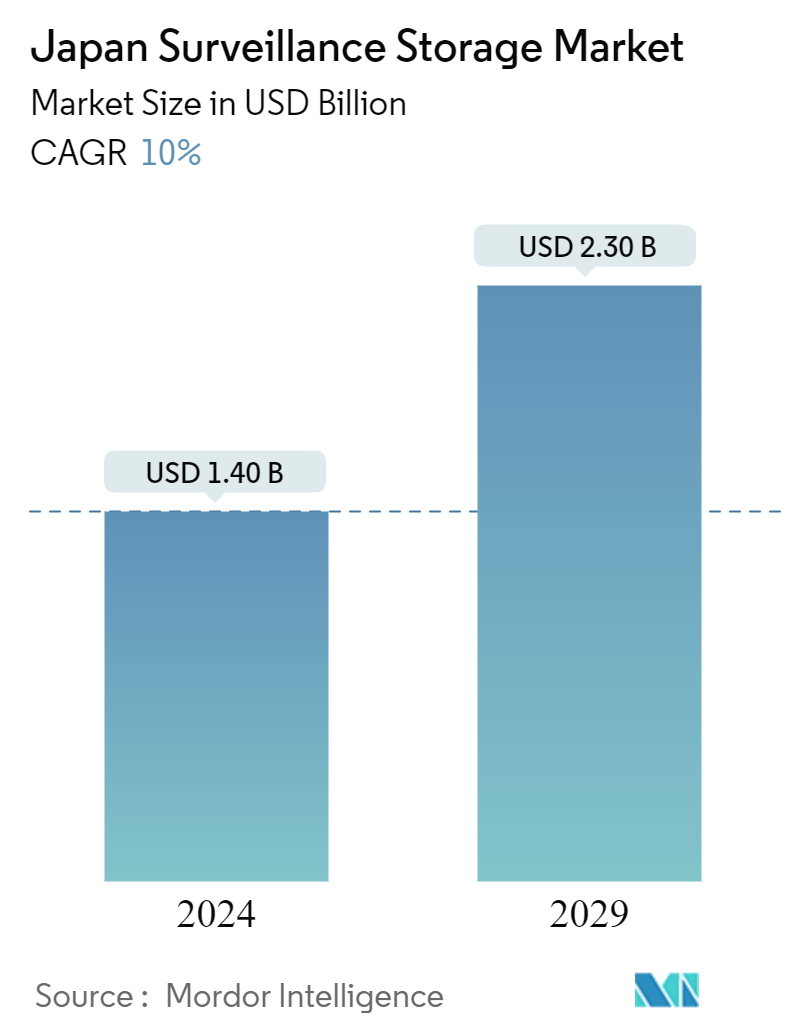
| Study Period | 2019 - 2029 |
| Base Year For Estimation | 2023 |
| Market Size (2024) | USD 1.40 Billion |
| Market Size (2029) | USD 2.30 Billion |
| CAGR (2024 - 2029) | 10.00 % |
| Market Concentration | Low |
Major Players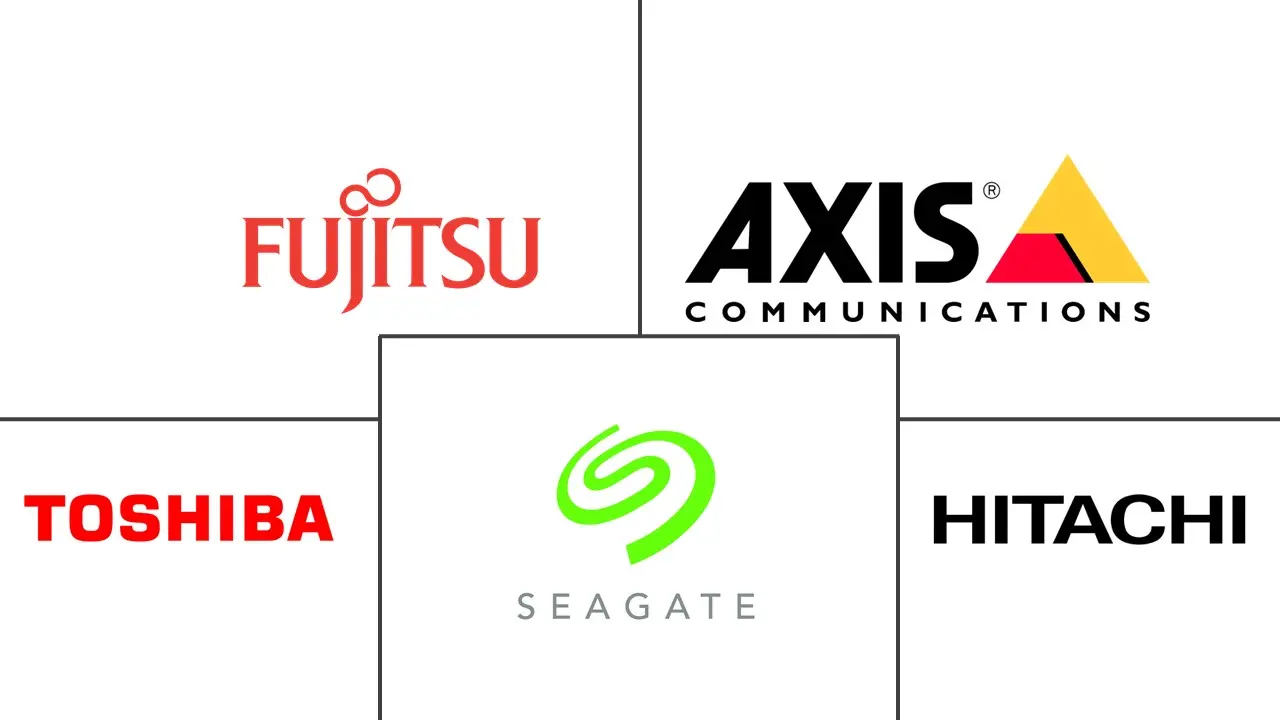
*Disclaimer: Major Players sorted in no particular order |
Japan Surveillance Storage Market Analysis
The Japan Surveillance Storage Market size is estimated at USD 1.40 billion in 2024, and is expected to reach USD 2.30 billion by 2029, growing at a CAGR of 10% during the forecast period (2024-2029).
Japan is positioning itself as a premier global tourist hub, bolstered by a surge in major international events. This influx is set to draw a rising number of visitors. While Japan has a reputation as one of the world's safest nations, the escalating global security concerns, including terrorism, have underscored the need for heightened vigilance. Japan is pivoting toward bolstering security to ensure that the diverse global populace can immerse themselves in the Japanese culture and enjoy a trouble-free vacation. This entails implementing proactive security protocols at its key public safety venues and transportation and energy frameworks.
- Moreover, security cameras, originally designed to combat crime, serve many purposes. For example, Chubu Electric Power Co.’s Mirai Tower in Nagoya installed a security camera in a shared office on the tower's third floor in early December, which streams live footage of the area around Hisaya-odori Park on YouTube. This feed showcases the crowd density and traffic and provides real-time weather updates.
- Further, Japan's economic backbone relies on a robust transport network, energy facilities, and critical installations like ports and defense facilities. The country, often lauded for its safety, faces vulnerabilities. A terrorist strike could sever essential services like electricity and water, disrupt vital transportation networks, and result in significant human casualties.
- Given these risks, Japan has been intensifying its security efforts. Safety guidelines are being reinforced, and facilities are increasingly mandated to prioritize public safety.
- For instance, in June 2023, The Ministry of Land, Infrastructure, Transport and Tourism of Japan announced plans to mandate cameras on new trains in major metropolitan areas and all new Shinkansen bullet trains by September, responding to a surge in train-related violence. Additionally, in February 2024, The National Police Agency outlined a plan to deploy approximately 1,000 security cameras in Ishikawa Prefecture's quake-affected areas. These cameras aim to deter crimes like sexual assaults and home burglaries. Moreover, live video webcasts from patrol cars are helping reassure evacuees displaced by events like the Noto Peninsula Earthquake.
- However, the efficacy of security camera footage hinges on its accessibility and usability. Therefore, a robust storage solution is imperative. It secures and retrieves data and facilitates seamless data exchange across devices and networks, especially given the substantial data volumes generated by modern CCTV systems.
Japan Surveillance Storage Market Trends
Cloud Deployment is Gaining Popularity
- Japan has witnessed a significant surge in digital transformation, largely attributed to the widespread adoption of cutting-edge technologies. Cloud computing, in particular, has been a game-changer on a global scale, with Japan at the forefront of this shift. A survey by Japan's Ministry of Internal Affairs and Communications in August 2023 revealed that over 50% of Japanese companies had fully integrated cloud computing services, while an additional 27.1% had implemented these services in select offices or departments.
- Over the last decade, there has been a notable uptick in the use of cloud storage for video surveillance. This trend is primarily driven by organizations' need to efficiently store and access the increasing volumes of high-definition video files.
- For instance, a single camera in a standard security setup, recording at 1080p resolution, 10 frames per second, and using H.264-10 compression, can easily amass over 750GB of video data in just one month. When multiplied across the numerous cameras that enterprises typically deploy, the strain on traditional infrastructure becomes evident.
- Video surveillance as a service (VSaaS) has emerged as a compelling alternative to conventional systems. This cloud-based approach empowers businesses to remotely access and manage their security systems from any location, ensuring security and convenience.
- By transitioning to cloud-based video surveillance, organizations have the full functionality of traditional systems without the associated limitations. This means shedding the need for bulky on-premises equipment like video servers and disk drives for storage. Additionally, businesses can avoid insecure remote access methods, such as port forwarding or UPnP, eliminating the need for routers and firewalls.
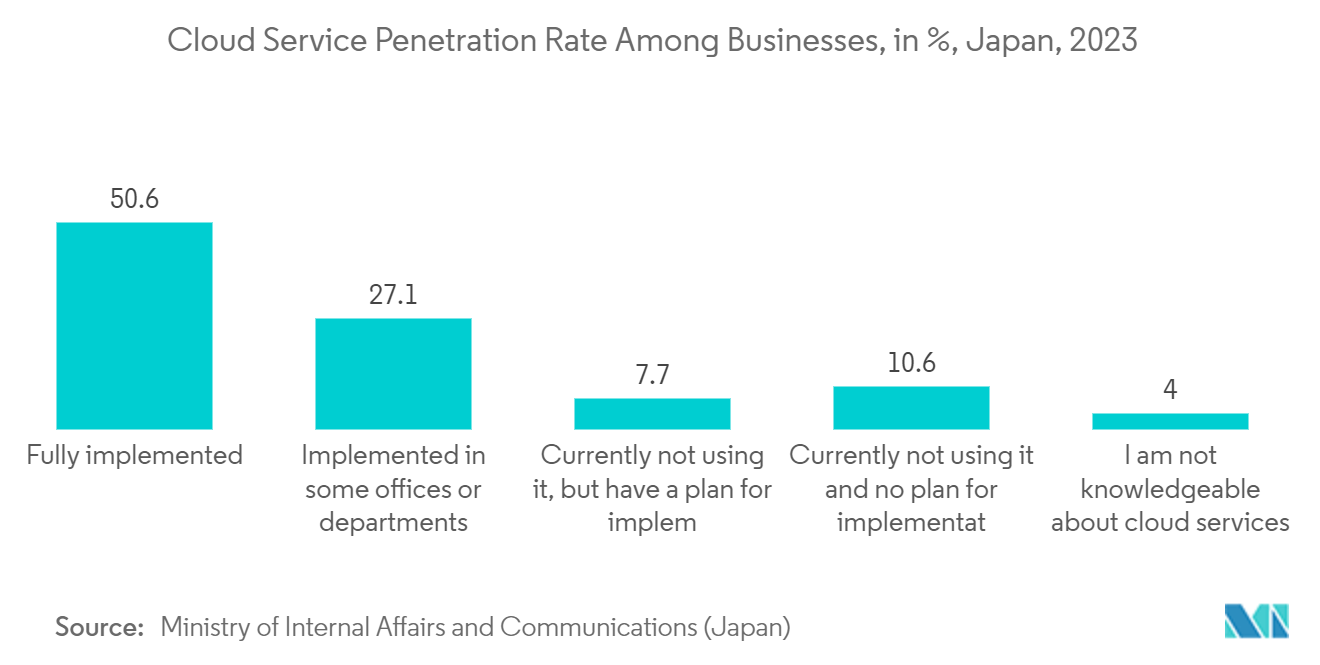
Home Security is Gradually Gaining Popularity
- Japan's aging population, the world's longest-living, is on the cusp of a demographic shift. As prosperity rose, birth rates fell, and with the baby-boom generation nearing retirement, Japan's public pension schemes faced mounting pressure. The IMF highlights the dilemma: either raise contribution levels or trim benefits. By 2025, the ratio will skew, with one elderly person for every two in the workforce, giving Japan the highest old-age dependency ratio among major industrial nations. The World Bank Group notes that Japan's 65-and-above demographic already accounts for 30% of its populace.
- These statistics underscore a pressing issue: the security of Japan's elderly, especially in their homes. These residences, often housing vulnerable individuals, are prime targets for exploitation. Installing surveillance cameras in entryways, common areas, and outside deters potential wrongdoers and assures residents of their safety.
- Emergencies are unpredictable, especially for older people in retirement homes. Surveillance cameras provide live feeds and recorded footage, enabling swift responses to incidents like falls or medical emergencies. This ensures that authorities can be promptly notified, potentially averting further harm.
- Over the past decade, technology has revolutionized Japanese homes, transitioning them into smart residences. Consequently, security and access control systems have become integral, boasting features like smart locks and advanced surveillance. Driven by rising safety concerns and a demand for remote monitoring, these systems are gaining popularity among homeowners.
- As surveillance technology in residential settings advances, the importance of storage solutions becomes increasingly evident. With many options, local storage security cameras stand out for their ability to store data independently without relying on internet connectivity or cloud services. This offers users greater control and enhances data privacy.
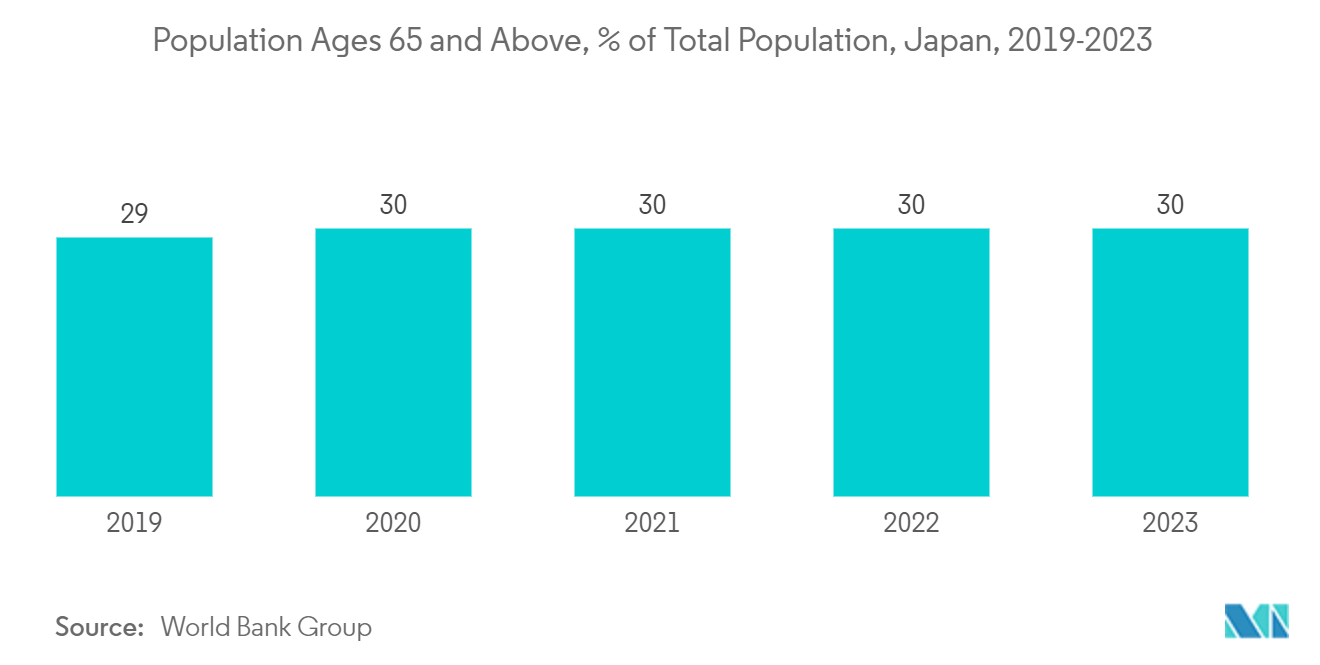
Japan Surveillance Storage Industry Overview
The competitive landscape in the Japanese surveillance storage market is characterized by low rivalry. This is primarily due to the presence of numerous large vendors who hold a significant market share and possess well-established distribution networks. Leading companies within this market actively engage in mergers and acquisitions (M&A) and form strategic partnerships to expand their reach and increase their market presence. Notable vendors in this sector include Hitachi, Fujitsu, Cisco, Dell Technologies, and Hikvision.
In Japan, surveillance camera manufacturers are on a mission to expand their technological capabilities by incorporating AI to ensure optimal safety and security. The president of Japan Security System Corporation recently highlighted the pressing need for digitalization and AI, particularly in enhancing productivity and providing top-notch solutions in nursing homes and caregiving facilities.
As the industry moves from analog systems to digital platforms, the shift to cloud storage for video surveillance is expected to become prevalent. This transition to cloud storage is expected to address the limitations of traditional surveillance and offer benefits such as cost-effectiveness, accessibility, and scalability in the coming future.
Japan Surveillance Storage Market Leaders
-
Axis Communication
-
Toshiba Corporation
-
Fujitsu
-
Hitachi, Ltd.
-
Seagate Technology Holdings plc
*Disclaimer: Major Players sorted in no particular order
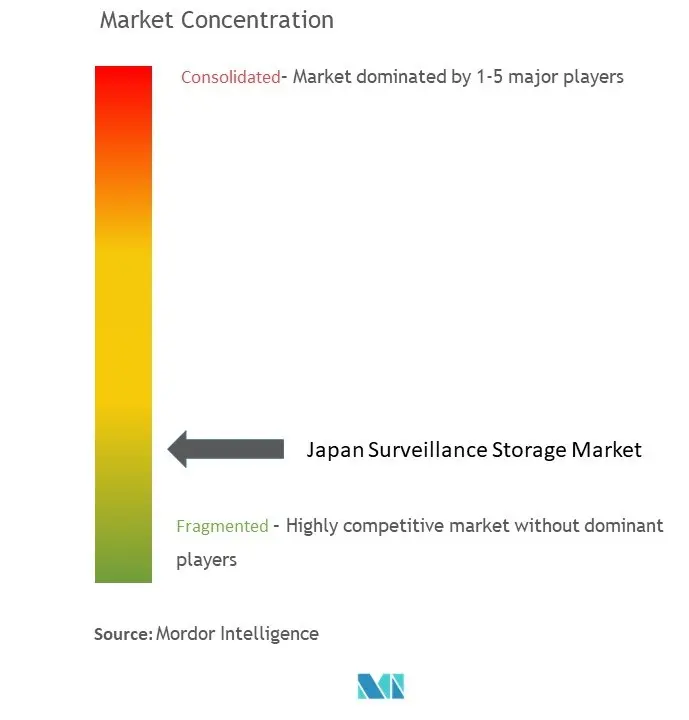
Japan Surveillance Storage Market News
- April 2024: Axis Communications introduced Axis Cloud Connect, an open cloud platform. This platform is crafted to offer customers security solutions that are secure, flexible, and scalable. Drawing on their 20 years of cloud connectivity expertise and with over a million Axis cameras currently leveraging cloud technology, Axis Cloud Connect is specifically designed to integrate effortlessly with Axis devices. This integration equips businesses with a full suite of managed services. These services span system and device management, video and data delivery, and crucially, cater to the heightened cybersecurity needs of today's landscape.
- February 2024: Phison Electronics introduced a new line of SSD storage solutions tailored for video and surveillance systems. The offerings include the mid-high-range S12DI and the more budget-friendly S17T SSD solutions. These solutions cater to a range of needs, from securing buildings and monitoring remote areas for suspicious activities to handling high-resolution CCTV footage.
Japan Surveillance Storage Market Report - Table of Contents
1. INTRODUCTION
1.1 Study Assumptions and Market Definitions
1.2 Scope of the Study
2. RESEARCH METHODOLOGY
3. EXECUTIVE SUMMARY
4. MARKET INSIGHTS
4.1 Market Overview
4.2 Industry Value Chain Analysis
4.3 Industry Attractiveness - Porter's Five Forces Analysis
4.3.1 Bargaining Power of Suppliers
4.3.2 Bargaining Power of Consumers
4.3.3 Threat of New Entrants
4.3.4 Threat of Substitute Products
4.3.5 Intensity of Competitive Rivalry
4.4 Impact of Macro Economic Trends on the Market
5. MARKET DYNAMICS
5.1 Market Drivers
5.1.1 Rising Government Projects Associated with Security Camera Installations to Surge Public Protection
5.1.2 Growing Importance of Storage Solutions with Advancements in Surveillance Technologies such as Video Analytics
5.2 Market Restraints
5.2.1 High Cost of Storage Solutions
6. MARKET SEGMENTATION
6.1 By Product
6.1.1 NAS
6.1.2 SAN
6.1.3 DAS
6.2 By Storage Media
6.2.1 HDD
6.2.2 SSD
6.3 By Deployment
6.3.1 Cloud
6.3.2 On-premise
6.4 By End-user Vertical
6.4.1 Government and Defense
6.4.2 Education
6.4.3 BFSI
6.4.4 Retail
6.4.5 Transportation and Logistics
6.4.6 Utilities
6.4.7 Healthcare
6.4.8 Home Security
6.4.9 Other End-user Verticals
7. COMPETITIVE LANDSCAPE
7.1 Company Profiles
7.1.1 Axis Communications AB
7.1.2 Toshiba Corporation
7.1.3 Fijitsu
7.1.4 Hitachi
7.1.5 Seagate Technology Holding PLC
7.1.6 Dell Technologies
7.1.7 Hangzhou Hikvision Digital Technology Co. Ltd
7.1.8 Hanwha Group
7.1.9 Cisco Systems
7.1.10 VIVOTEK
7.1.11 ADATA
7.1.12 Zhejiang Uniview Technologies Co. Ltd
7.1.13 Honeywell International Inc.
7.1.14 CP Plus
- *List Not Exhaustive
8. INVESTMENT ANALYSIS
9. FUTURE OF THE MARKET
Japan Surveillance Storage Industry Segmentation
Surveillance systems refer to a combination of recording devices installed for surveillance to prevent crime in private and public locations. Data storage is a critical component of the surveillance infrastructure. The scope and the market size only cover the video surveillance storage market.
The Japanese surveillance storage market is segmented by product (NAS, SAN, and DAS), storage media (HDD and SSD), deployment (cloud and on-premise), and end-user vertical (government and defense, education, BFSI, retail, transportation and logistics, healthcare, home security, and other end-user verticals). The market sizes and forecasts are provided in terms of value (USD) for all the above segments.
| By Product | |
| NAS | |
| SAN | |
| DAS |
| By Storage Media | |
| HDD | |
| SSD |
| By Deployment | |
| Cloud | |
| On-premise |
| By End-user Vertical | |
| Government and Defense | |
| Education | |
| BFSI | |
| Retail | |
| Transportation and Logistics | |
| Utilities | |
| Healthcare | |
| Home Security | |
| Other End-user Verticals |
Japan Surveillance Storage Market Research FAQs
How big is the Japan Surveillance Storage Market?
The Japan Surveillance Storage Market size is expected to reach USD 1.40 billion in 2024 and grow at a CAGR of 10% to reach USD 2.30 billion by 2029.
What is the current Japan Surveillance Storage Market size?
In 2024, the Japan Surveillance Storage Market size is expected to reach USD 1.40 billion.
Who are the key players in Japan Surveillance Storage Market?
Axis Communication, Toshiba Corporation, Fujitsu, Hitachi, Ltd. and Seagate Technology Holdings plc are the major companies operating in the Japan Surveillance Storage Market.
What years does this Japan Surveillance Storage Market cover, and what was the market size in 2023?
In 2023, the Japan Surveillance Storage Market size was estimated at USD 1.26 billion. The report covers the Japan Surveillance Storage Market historical market size for years: 2019, 2020, 2021, 2022 and 2023. The report also forecasts the Japan Surveillance Storage Market size for years: 2024, 2025, 2026, 2027, 2028 and 2029.
Japan Surveillance Storage Industry Report
Statistics for the 2024 Japan Surveillance Storage market share, size and revenue growth rate, created by ����vlog��ý™ Industry Reports. Japan Surveillance Storage analysis includes a market forecast outlook for 2024 to 2029 and historical overview. Get a sample of this industry analysis as a free report PDF download.



